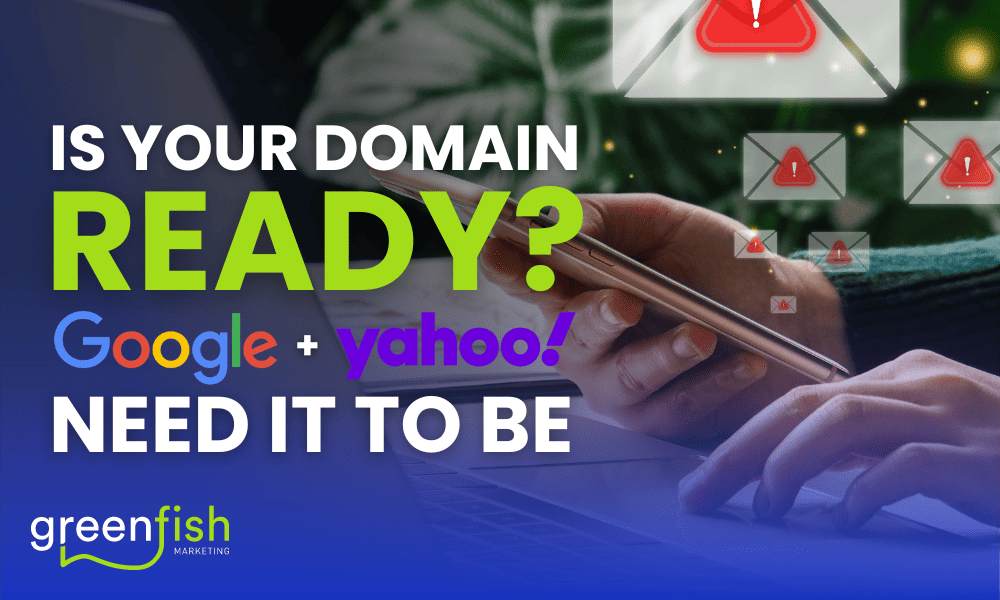Today’s email marketing strategies fall into two categories — email automation and email broadcasting. Both methods help reach prospects and current customers by providing relevant information, product releases, and more.
However, understanding both email marketing types and how it works for you can make the difference between capturing a lead and bringing them into your sales funnel or losing them to another company.
But how do you know which method works best for the information you want to send? Let’s make sure we understand the difference between the two first.
What is Email Broadcasting?
Email broadcasting refers to emails sent manually to many already existing recipients. When we say “manually,” it means someone is actually pressing the “send” button or schedules the email and picks a date to send it. These types of emails are usually referred to as Electronic Direct Mailing, or EDM.
An EDM involves building an email database to directly send email communications and promotional offers to both customers and potential customers. However, the extent of automation is by scheduling an email to go out on a specific date and time, it is not triggered to automatically send by an action taken by the customer. For example, if the customer purchases something from your website, a thank you email automatically goes out. An EDM does not have this function.
What is Email Automation?
Email automation happens when a customer or potential customer interacts with your brand. This action could be clicking on a button on your website, sending an email, filling out a form, or any other direct action with your company. This could be signing up for a newsletter, purchasing, downloading material, or requesting a catalogue.
Whatever action the customer takes triggers an automatic email with a message relevant and reinforcing the action taken on your site. The goal is to provide a personalised experience and encourage the customer to come back and interact with your brand repeatedly.
Is One Better Than The Other?
Both types of emails are effective when used correctly. The problem is that many business owners and marketing teams email marketers only use one or the other, rather than using them in tandem to maximise the touchpoints for leads and current customers alike.
When deciding which one to use for what takes a little research to ensure you’re using the correct email at the right time and reaching the most amount of people to encourage sales, actions, and loyalty to your brand. There are five ways to determine which type of email reaches the right people at the right time.
5 Ways to See if the Right Email is Reaching the Right Person
1. Track Email Behaviour vs. Web Behaviour
There are differences between email marketing and marketing automation based on the platform’s data. Email automation tools track behaviour within a specific action taken on your website or an email you sent. It tracks things like open rate, what link is clicked in an email, a call to action clicked on your website, and more. As you collect data, you see the percentage of people who interacted with the email and did nothing.
Broadcast emails track a lead’s behaviour on the web. It collects data from everywhere they interact with your company online. For example, once a link is clicked, you can follow if they went to a landing page, how many pages they visited after that first page if they downloaded an asset like a white paper or infographic.
No matter what type of email is sent, both provide a complete picture of your lead’s and customer’s journey through your marketing and sales funnel to create more personalised and targeted campaigns based on the observed behaviour.
2. Single-Path or Customer-Centred Messaging
Email marketing is a significant investment of time. Emails are created, lists segmented for specific email campaigns, and the next steps after email delivery. Once you build a campaign, a basic email programme sends emails out to everyone on your list. This is called batch and blast. Depending on your automation tool, you may be able to send the same email to different segments of your mailing list. The right system provides dynamic content, so people in different segments get slightly different messages and offers.
However, marketing automation requires a lot of hands-on work upfront but produces better results for your efforts. You still create the emails, plan the campaign, and segment your list, but you also build automated programmes with choices and options for the recipient. You can even set up drip campaigns to send a series of messages over time and go out to people automatically as they engage with your brand.
Another type of drip campaign is a nurture campaign. Nurture campaigns send follow-up communications based on how a prospective customer interacts with yourplatform manages your leads automatically based on data profiles and digital body language. Real-time analytics track engagement and qualification metrics (if you’ve set up lead scoring), allowing you to segment leads for additional marketing outreach. Because of these automation tools, you can create dynamic campaigns to follow individual leads instead of one large list with no target. Nurture campaigns feel more personal and adapt to help marketers make the customer the centre of the experience.
3. Static Information vs. Dynamic Lead Scoring
Marketing automation, when set up correctly, helps to score leads. Lead scoring is a method to segment leads depending on their actions on your website, with emails, and other types of digital marketing strategies. The more a lead interacts, the higher score they get. For example, email blasts only report back customers’ actions to the email itself rather than tracking their actions, purchases, and other interactions with your brand. Marketing automation collects much more information to gain a holistic picture of leads actively interacting with your site, making purchases, and interacting with your brand. It also tracks lead intent based on behavioural cues.
For example, if you’re in B2B sales and market to a certain size company, you can create a form that asks the number of employees in the company. This data helps increase the lead score and enables you to determine how likely a lead is to convert. Each action they take increases their score and leads up to in-person communication like a phone call or a personal email to reach out.
4. Revenue Attribution vs. Revenue Assumption
Just because a customer opens your email and makes a purchase later doesn’t mean they purchased because of your email. They may have engaged with additional touchpoints on your website before they decided to buy. Using your email service provider, you can see if a lead clicked on a call to action link and made a purchase. On the other side, your CRM can follow a lead to see if they become a customer.
With marketing automation, you track the entire journey a lead takes to see the exact path to purchase and any other actions taken outside of your email. This holistic view helps you map purchase behaviour instead of assumptions about the journey. You can create content and assets to drive sales using this data instead of just throwing campaigns out there and hoping to make a sale.
5. Automated Email vs. Intelligent Follow-up
Most modern email marketing tools have an automation component, but it all depends on the platform you use. If your email marketing tool is a simple system, the extent of automation is scheduling email blasts and then sending them on specific dates. More advanced platforms include triggers to automatically send an email, or SMS when a particular action is taken on your site or within the email. Using these automatic responses helps create nurturing campaigns to continue the lead down the purchasing journey. You can take your automation to the next level with intelligent action based on the lead’s behaviour during the interaction with your site and emails. The system optimises the timing of contact, the message and creates suggestions for a phone call or direct mail. Shifting from a blast email sent out regularly and sending an email that follows the lead through the marketing and sales funnel provides a more personalised experience and encourages leads to convert to customers.
Optimise Your Email Marketing Strategy
Strong and strategic communication drives business success. Greenfish Marketing helps business owners communicate more realistically and efficiently with new and past customers. We offer marketing and communication services to increase engagement and lead to growing profits.
So what is good communication? Profits are important. And ethics are essential. At Greenfish Marketing, we do well at both. Once you have designed the ideal Marketing and Communication strategy, it’s time to optimise your automation by identifying benefits, mistakes, and available improvements. Our fully integrated offering builds, executes, and reviews your marketing campaigns for success.
Contact us today and find out how we can help you implement an all-in-one marketing and communications strategy with your customer in mind.




